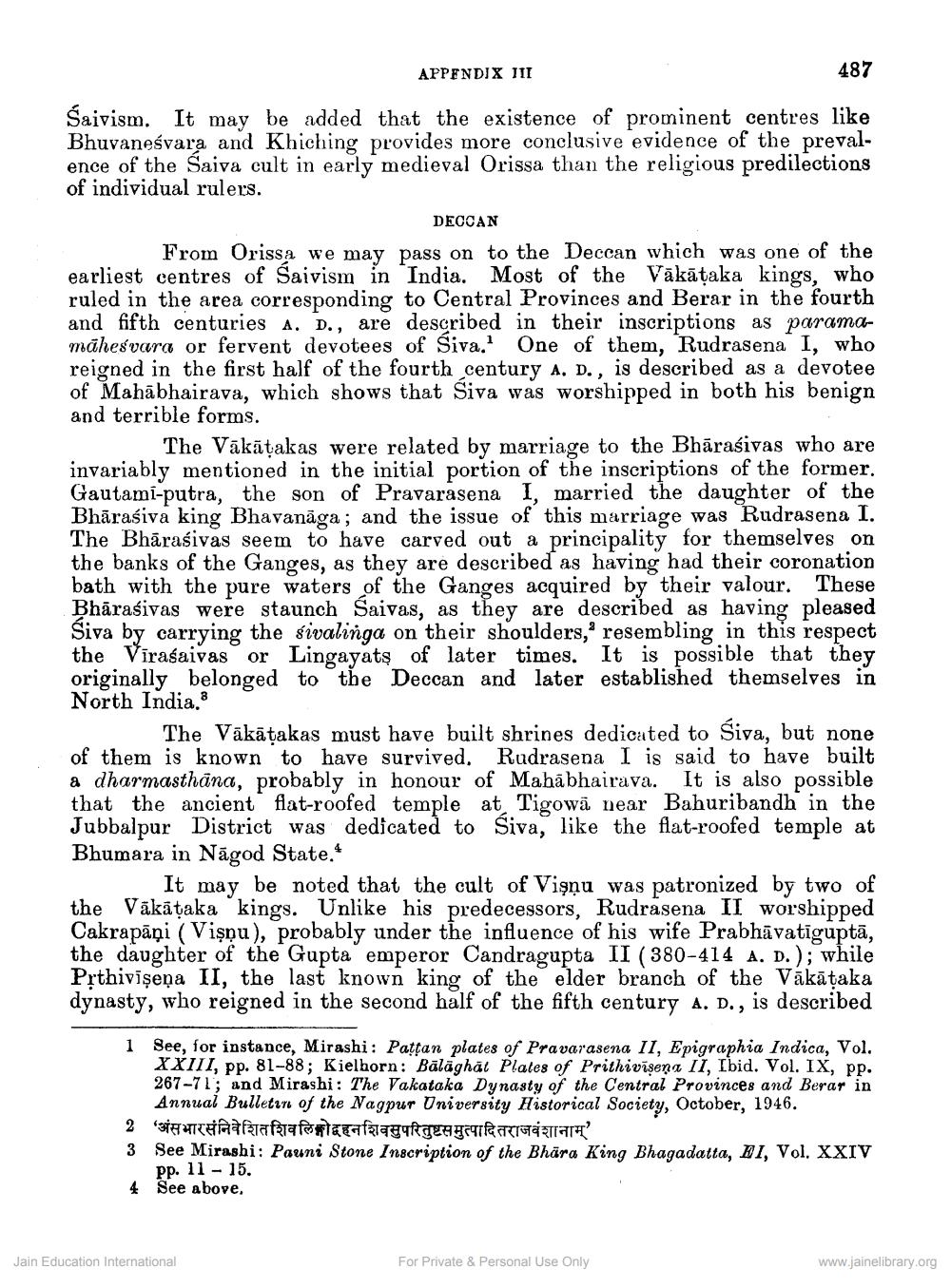________________
APPENDIX III
487
Śaivism. It may be added that the existence of prominent centres like Bhuvanesvara and Khiching provides more conclusive evidence of the prevalence of the Saiva cult in early medieval Orissa than the religious predilections of individual rulers.
DECCAN
From Orissa we may pass on to the Deccan which was one of the earliest centres of Saivism in India. Most of the Vakaṭaka kings, who ruled in the area corresponding to Central Provinces and Berar in the fourth and fifth centuries A. D., are described in their inscriptions as paramamahesvara or fervent devotees of Siva. One of them, Rudrasena I, who reigned in the first half of the fourth century A. D., is described as a devotee of Mahabhairava, which shows that Siva was worshipped in both his benign and terrible forms.
The Vakaṭakas were related by marriage to the Bhārasivas who are invariably mentioned in the initial portion of the inscriptions of the former. Gautami-putra, the son of Pravarasena I, married the daughter of the Bharasiva king Bhavanaga; and the issue of this marriage was Rudrasena I. The Bharasivas seem to have carved out a principality for themselves on the banks of the Ganges, as they are described as having had their coronation bath with the pure waters of the Ganges acquired by their valour. Bhārasivas were staunch Saivas, as they are described as having pleased Siva by carrying the sivalinga on their shoulders, resembling in this respect the Virasaivas or Lingayats of later times. It is possible that they originally belonged to the Deccan and later established themselves in North India.
These
The Vākāṭakas must have built shrines dedicated to Śiva, but none of them is known to have survived. Rudrasena I is said to have built
a dharmasthana, probably in honour of Mahabhairava. It is also possible that the ancient flat-roofed temple at Tigowa near Bahuribandh in the Jubbalpur District was dedicated to Siva, like the flat-roofed temple at Bhumara in Nagod State.*
It may be noted that the cult of Visnu was patronized by two of the Vakataka kings. Unlike his predecessors, Rudrasena II worshipped Cakrapāņi (Vişņu), probably under the influence of his wife Prabhavatigupta, the daughter of the Gupta emperor Candragupta II (380-414 A. D.); while Prthivisena II, the last known king of the elder branch of the Vakaṭaka dynasty, who reigned in the second half of the fifth century A. D., is described
1 See, for instance, Mirashi: Paṭṭan plates of Pravarasena II, Epigraphia Indica, Vol. XXIII, pp. 81-88; Kielhorn: Balaghat Plates of Prithivisena II, Ibid. Vol. IX, pp. 267-71; and Mirashi: The Vakataka Dynasty of the Central Provinces and Berar in Annual Bulletin of the Nagpur University Historical Society, October, 1946.
2 'अंसभार संनिवेशित शिव लिङ्गोद्वहन शिवसुपरितुष्टसमुत्पादितराजवंशानाम्'
3
See Mirashi: Pauni Stone Inscription of the Bhara King Bhagadatta, EI, Vol. XXIV pp. 11-15.
4 See above.
Jain Education International
For Private & Personal Use Only
www.jainelibrary.org




